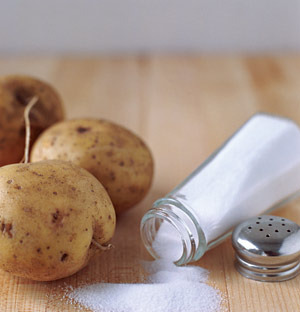Reducing salt significantly could be nearly impossible: study
A recent study is questioning the World Health Organization’s (WHO) dietary guidelines for sodium and potassium, saying it has set targets that are out of reach in many cultures. In the interest of reducing heart disease and stroke, the WHO recommends consuming less than 2,000 milligrams of salt per day, an amount roughly equal to less than a teaspoon. On the flipside, the WHO’s recommended daily potassium intake is 3,510 milligrams per day, which would require eating about six potatoes per day, or drinking nine cups of milk per day. Potassium-rich foods are well known to reduce heart disease and stroke, yet individuals are unlikely to consume enough of them to reach WHO target levels.
The data confirm that we eat too much sodium and not enough potassium. But they also suggest that the numbers being proposed by WHO and other health agencies are completely unfeasible.
Dr. Adam Drewnowski of University of Washington
Sodium and potassium are found in many of the same foods, according to Dr. Drewnowski, and this creates conflict when it comes down to a question of how much milk to drink, for it contains both. Potassium-rich foods that don’t contain sodium such as greens, citrus and fish are expensive, he says, adding approximately $1.49 per day or $42 per week to an individual’s food bill. Sprinkling potassium over food as a supplement isn’t the answer, either, according to Dr. Drewnowski, for the substance has a metallic, bitter taste.

Health Sodium